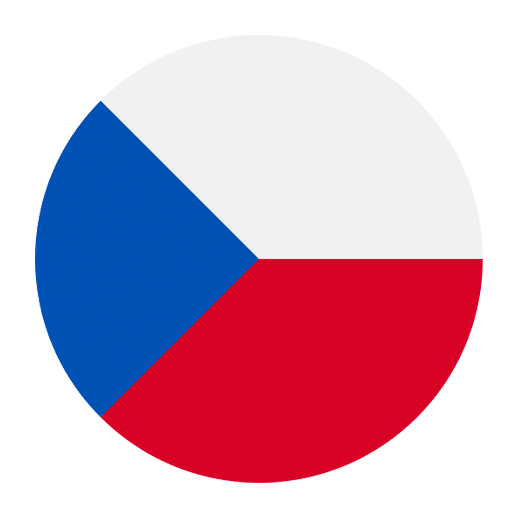Learning to navigate a new country or city is an essential skill, especially when you’re traveling or moving to a place where the primary language is not your own. If you’re heading to the Czech Republic or planning to immerse yourself in the Czech language, knowing how to ask for and understand directions is invaluable. This article will equip you with the essential expressions for directions and locations in Czech, ensuring you’re prepared for any adventure in this beautiful country.
Key Vocabulary for Directions
Before diving into the expressions, it’s important to familiarize yourself with some key vocabulary related to directions in Czech. Here are some fundamental words and phrases that will help you get started:
– **Doprava** (to the right)
– **Doleva** (to the left)
– **Rovně** (straight ahead)
– **Zpět** (back)
– **Nahoru** (up)
– **Dolů** (down)
– **Blízko** (near)
– **Daleko** (far)
– **Vedle** (next to)
– **Napříč** (across)
Asking for Directions
When you’re in an unfamiliar place, knowing how to ask for directions can make your life significantly easier. Here are some common phrases you can use to ask for directions in Czech:
– **Kde je…?** (Where is…?)
– Example: *Kde je nádraží?* (Where is the train station?)
– **Jak se dostanu k…?** (How do I get to…?)
– Example: *Jak se dostanu k muzeu?* (How do I get to the museum?)
– **Můžete mi říct, kde je…?** (Can you tell me where… is?)
– Example: *Můžete mi říct, kde je nejbližší lékárna?* (Can you tell me where the nearest pharmacy is?)
– **Je to daleko?** (Is it far?)
– Example: *Je to daleko k náměstí?* (Is it far to the square?)
– **Kolik to trvá pěšky?** (How long does it take on foot?)
– Example: *Kolik to trvá pěšky do centra?* (How long does it take on foot to the city center?)
Understanding Directions
Once you’ve asked for directions, you’ll need to understand the response. Here are some common phrases and expressions you might hear:
– **Jděte rovně.** (Go straight.)
– **Zahněte doprava.** (Turn right.)
– **Zahněte doleva.** (Turn left.)
– **Pokračujte rovně.** (Continue straight.)
– **Je to napravo.** (It’s on the right.)
– **Je to nalevo.** (It’s on the left.)
– **Je to naproti.** (It’s opposite.)
– **Na rohu.** (On the corner.)
– **Vedle…** (Next to…)
– **Za…** (Behind…)
– **Před…** (In front of…)
Combining Directions
Sometimes, directions can be more complex and require a combination of several steps. Here are some examples of combined directions in Czech:
– **Jděte rovně a na druhé křižovatce zahněte doprava.** (Go straight and at the second intersection, turn right.)
– **Pokračujte rovně, projděte kolem kostela a pak zahněte doleva.** (Continue straight, pass the church, and then turn left.)
– **Jděte dolů po schodech a pak pokračujte rovně.** (Go down the stairs and then continue straight.)
Landmarks and Points of Interest
When giving or receiving directions, landmarks and points of interest can be incredibly helpful. Here are some common landmarks and their Czech translations:
– **Nádraží** (train station)
– **Autobusová zastávka** (bus stop)
– **Lékárna** (pharmacy)
– **Nemocnice** (hospital)
– **Škola** (school)
– **Kostel** (church)
– **Obchod** (shop)
– **Restaurace** (restaurant)
– **Hotel** (hotel)
– **Muzeum** (museum)
– **Náměstí** (square)
– **Park** (park)
– **Most** (bridge)
Directional Phrases in Context
To put these expressions into context, let’s look at some dialogues that might occur when asking for and receiving directions in Czech.
Dialogue 1: Asking for Directions to a Restaurant
**Person A:** *Dobrý den, kde je nejbližší restaurace?* (Hello, where is the nearest restaurant?)
**Person B:** *Dobrý den, jděte rovně, zahněte doleva na první ulici a restaurace bude na pravé straně.* (Hello, go straight, turn left at the first street, and the restaurant will be on the right side.)
Dialogue 2: Asking for Directions to a Museum
**Person A:** *Promiňte, jak se dostanu k muzeu?* (Excuse me, how do I get to the museum?)
**Person B:** *Pokračujte rovně, projděte náměstím a muzeum je naproti kostelu.* (Continue straight, go through the square, and the museum is opposite the church.)
Dialogue 3: Asking for Directions to a Pharmacy
**Person A:** *Můžete mi říct, kde je nejbližší lékárna?* (Can you tell me where the nearest pharmacy is?)
**Person B:** *Ano, je to velmi blízko. Jděte dolů po této ulici, zahněte doprava na rohu a lékárna bude po vaší levici.* (Yes, it’s very close. Go down this street, turn right at the corner, and the pharmacy will be on your left.)
Common Mistakes and Tips
When learning to ask for and give directions in Czech, there are some common mistakes that learners might make. Here are a few tips to help you avoid them:
– **Gender Agreement:** Czech is a gendered language, so make sure to match the gender of the noun with the correct form of the adjective or verb. For example, *nejbližší lékárna* (nearest pharmacy) vs. *nejbližší hotel* (nearest hotel).
– **Pronunciation:** Pay attention to the pronunciation of key directional words. For example, *doprava* (to the right) vs. *dopravu* (transport).
– **Contextual Clues:** Use contextual clues and landmarks to help understand directions better. If you’re unsure about a word, ask for clarification using landmarks: *Je to blízko parku?* (Is it near the park?)
– **Practice:** Practice makes perfect. Try to use these expressions in real-life situations as much as possible to become more comfortable with them.
Conclusion
Navigating through a new place can be daunting, but with these essential expressions for directions and locations in Czech, you’ll be well-prepared to find your way around. Whether you’re asking for directions to a restaurant, a museum, or a pharmacy, these phrases and vocabulary will be incredibly useful. Remember to practice regularly, pay attention to pronunciation and gender agreement, and don’t hesitate to ask for clarification if needed. With time and practice, you’ll become more confident and proficient in using Czech for directions and locations. Happy travels!

